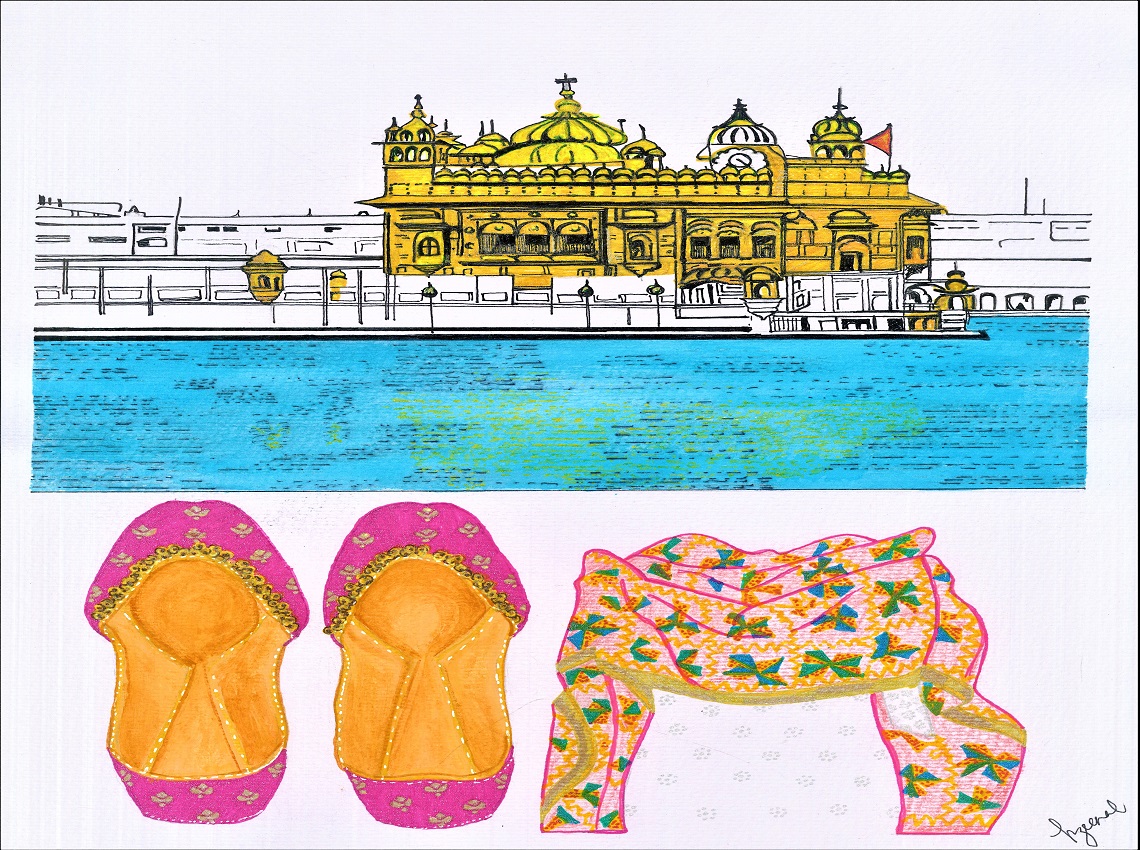Mothers may single-handedly be the most influential forces in our lives. My mother's "hand", in fact, was a multi-purpose tool that held me through much, prepared me for much and influenced the way I held, prepared and influenced much myself - particularly, my own brood.
Speaking of hands,
Hers cooked, I watched; my hands sometimes attempting to emulate hers by mixing, sprinkling, moulding, clasping and tossing. When my love of the kitchen and curiosity deepened, she took mine in hers, and led me into one of the most generous kitchens to exist - A Gurudwara.
A Golden one:
The Sri Harmandir Sahib Temple in Amritsar, a city in the plentiful State of Punjab.
A place where she only let go of my hand to fold it in prayer.
(My hands followed suit. As they always had. As they still do.)
A place where hearts of Gold meet to cook, to feed and to honour the hungry with a meal that could get them through the day, at the very least.
A place where being a helping hand is the equivalent of prayer.
It is where I learnt that the hand that cooks is an empowered one.
For it has the power to fill a belly that the world may have forgotten or abandoned or left empty.
Our respects paid at the altar, we headed to the "Langar", the communal kitchen run by the temple. I doubt I've witnessed a miracle in motion bigger than that - The coordinated, efficient and magnanimous effort of hundreds of permanent employees and volunteers who cook, clean, facilitate and feed tens of thousands of devotees that appear at the doorstep of this Gurudwara.
The meal was simple and simply delicious. But there was a singular taste I too often beseeched my mum to reproduce after that meal - The Karah Parshad - a wheat flour dessert. And she did, every now and then, reminding me of that revelatory and divine visit to Amritsar.
The Karah Parshad is a special treat. It is an offering in exchange for our worship. We carry away sweetness in blessing.
As mum and I beheld the dazzling temple and its glittering relfection in the crystal waters that encircle it, she taught me that Parshad is generally prepared with ingredients that are most easily available. It makes the blessing universally accessible. This particular dessert is made from 5 things, in perfectly equal measure - whole wheat flour, clarified butter (ghee), sugar, milk and water. The simple and equal proportions of ingredients ensure a uniformity in preparation.
If a cup were your measure of choice,
A cup of flour is fried in a cup of ghee,
A cup of milk, a cup of water and a cup of sugar are added in.
The steady mixing of the mixture ensures
a soft, non-lumpy, dark-rose Halva forms, ready to be served warm.
The temple, that day, my hand in mum's was a sweetness and warmth I often revisit when I mix those ingredients in a pan myself and taste the blend thereafter.
Not too far from the Golden abode, I had my hands filled with more treats, endemic to the glorious, vibrant, earthen state we stood on. Two things I was very proud to own and possess unto this day - A Phulkari Dupatta (a lengthened stole) and Jootis (traditional Punjabi footwear).
The former reminds me to cover my head in reverence for the nobility of the "Langar" whenever I cook the Karah Parshad - a practice every devotee at the temple observes. The latter, of the impurities I must leave outside the kitchen to prepare a perfectly pure Parshad.
The latter also reminds me to slip them on and make my way to the glistening Temple when I miss the touch of mum's warm, supple, skilful hands.

